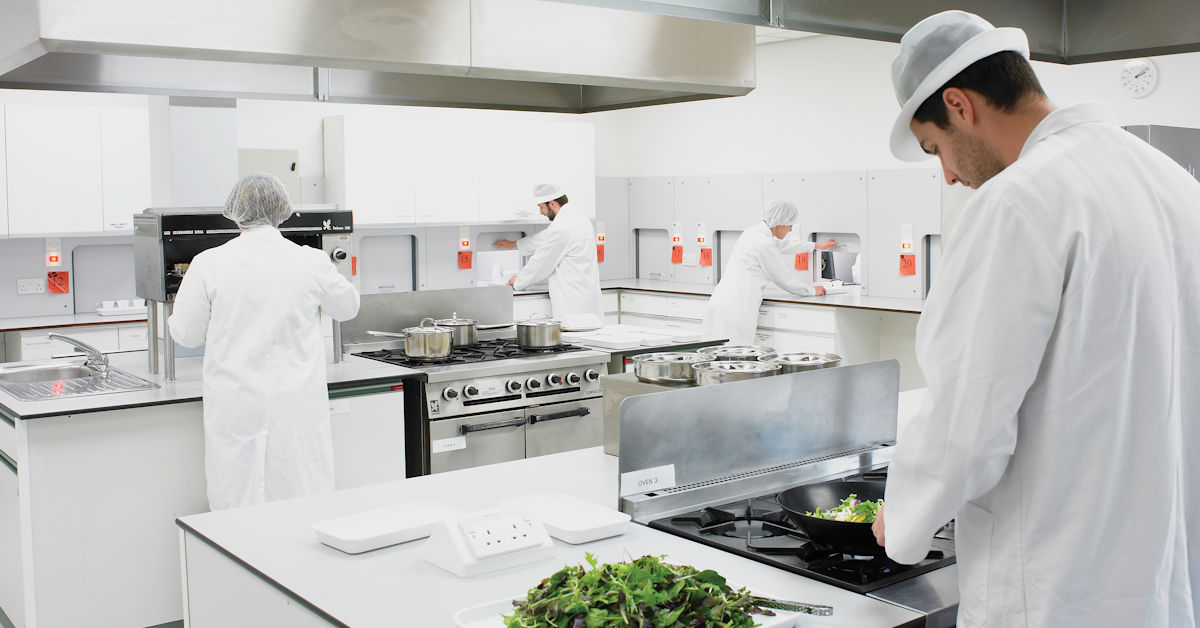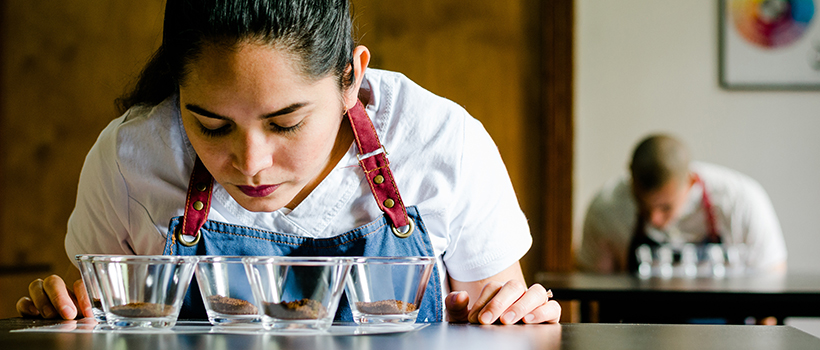
Tools for streamlined and successful product development
22 April 2024 | Marleen Chambault, Sensory and Consumer Research Scientist
The food and drink industry presents a fast-paced, constantly changing environment that requires creative thinking, quick responses and cost-effective solutions to meet consumer demand. So, how can you make sure your product development keeps pace, both efficiently and effectively?
From our product development experience and research, we present here 2 key ways to streamline product development and ensure success.
Firstly, combining several methods, such as instrumental and consumer ones, can deliver an effective, holistic approach that facilitates a full understanding of your product for successful innovations and renovations.
Secondly, experimental designs can be powerful tools when developing or reformulating products. They allow product and/or process changes to be made in a systematic way, to deliver a streamlined product development process with minimal input, experimental effort and cost – all whilst ensuring optimal output.
1. Holistic and combination approaches to successful product development
To characterise their products, developers often use instrumental methods without always considering the value of consumer insights. However, our study on meat alternatives demonstrates the benefits of a combined approach – using both instrumental and consumer methods to fully understand what really drives consumer liking so that the end product will be successful.
The study focused on a selection of commercial meat-free hams, for which consumer liking of six samples was measured. The data showed significant differences between their consumer liking scores, and a series of analytical tests were conducted to try to explain these differences.
Instrumental approaches – texture analysis and microscopy
Researchers suspected a possible link between consumer liking and texture however none of the texture measurements correlated highly with overall consumer liking.
As microstructural composition has a direct impact on texture and sensory perception, the samples were also assessed by compound light microscopy. A key finding was that the sample most liked by consumers was that which had a fibrous configuration that best resembled the muscle fibres and connective tissue seen in meat counterpart products.
Researchers concluded that this finding could explain the higher liking scores obtained with this sample and was consistent with the fact that most consumers involved in the study were meat-reducers (who would likely have preconceived expectations based on the taste and texture of meat counterpart products).
Answers from consumer insights
Following both texture and microstructure analyses, the researchers came to the conclusion that instrumental data can help explain consumer liking (particularly texture liking), but only to some extent.
Using a combination of data sources can provide a step change in product understanding and ultimately ensure successful product development.
Time-based sensory mapping with consumers is a product characterisation method where consumers indicate the sensory characteristics that they perceive over time whilst consuming the product. For a more complete understanding of consumer preferences / liking between the different meat-free ham products, we applied this mapping method and then used statistical analysis to determine those sensory characteristics that drove or prohibited consumers’ liking of the type of products being tested.
The time-based sensory mapping assessment showed which sensory attributes were perceived by the consumers during eating, enabling the characterisation of the samples in terms of flavour, texture and aftertaste. The work identified 12 sensory attributes that significantly impacted on liking (some positively and some negatively), as well as exactly when during the eating this impact took effect.
One attribute had both a negative and a positive impact on liking, depending on when it was perceived (earlier or later during eating). This demonstrates that the impact of a sensory attribute can vary over time – highlighting the need to capture time-based sensory data to fully understand the consumer experience of your product.
This study, on plant-based alternatives to meat is testament to how using a combination of data sources (such as from texture analysis, microscopy and consumer testing) can provide a step change in product understanding and ultimately ensure successful product development.

2. Experimental designs for optimal efficiency and results
When developing new products and processes, the optimal combination of factors that result in the most desirable product outcome often needs to be identified (examples of outcomes include consumer liking, nutritional profile and ingredient costs). One approach is to change one or a few factors at a time, in a stepwise way, and observe the impact on the outcome each time. However, this approach becomes time-consuming and expensive when a larger number of factors need to be taken into consideration.
A better alternative is to use an experimental design, which helps determine how to change the factors in the most efficient way so that the optimal outcome can be identified with the least experimental effort.
What is an experimental design?
The approach is based on identifying which input factors have the biggest impact on the product outcome. It can provide more information, greater accuracy and reliability of results, and a deeper understanding of the product being developed/redeveloped. Plus, it offers the ability to measure interactions between factors and to optimise more than one outcome at once – all while requiring fewer runs than ‘trial and error’ or ‘one factor at a time’ experiments.
Using an experimental design can lead to a better outcome, a better understanding of the product under study, and the opportunity for cost savings.
The benefits in practice
Using a sugar reduction case study, our research (as detailed in R&D report 489) has proven that using an experimental design can help achieve simultaneous product development goals, such as maximising taste enjoyment, maintaining a certain nutritional profile and minimising costs.
Furthermore, the case study demonstrated that using an experimental design (as opposed to a ‘trial & error’ approach) can lead to a better outcome, a better understanding of the product under study, and the opportunity for cost savings.
The most beneficial applications of experimental designs are believed to be when the product or process to modify/improve/investigate is complex, when many factors are known to impact the outcome of interest and when several goals are to be achieved (e.g. decrease cost and increase consumer liking).
Your partner for product development success
From changing formulations to revamping product packaging and optimising food processing, a plethora of options exist to get the most out of your products, while giving consumers a highly positive experience by understanding what they value.
We provide clients with clarity of how to achieve the sensory characteristics that consumers enjoy, and can support you in leveraging these for the success of your products. We can help you to use this knowledge to overcome challenges with existing products and to develop new and reformulated products with success.
Our knowledge and expertise place us at the forefront of global scientific innovation in this sector. No matter what our client challenge may be, we consistently deliver innovative solutions, helping clients to optimise their product to put them in a much better position to conquer their market.
Find out more about our product development services or contact us and speak to our experts.

About Marleen Chambault
Marleen joined Campden BRI as a Sensory and Consumer Research Scientist in 2012. Marleen obtained her Food Science Engineer diploma (equivalent to a Master’s degree) in Agri-food Business and Management from Agrocampus Ouest in France (now Institut Agro Rennes-Angers) in 2008.
Before joining Campden BRI, she worked for several large companies in France, Belgium, the USA and the UK, where she gained extensive experience in R&D, Research and Sensory and Consumer Science.
After contributing to the development of sensory and consumer research capabilities at Campden BRI for 12 years, she now provides specialist statistical and methodological support to a number of technical teams across the business, in addition to lecturing on the various training courses relating to sensory science, consumer research and statistics.
How can we help you?
If you’d like to find out more about product development support, contact our team to find out how we can help.
Food product development services
We can help across the full range of food and drink types - find out more







